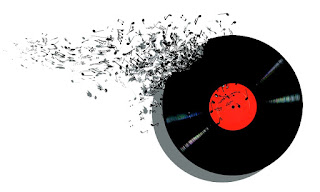The rise of social media, streaming, and the internet as a whole has given major record labels a run for their money. Many artists are remaining independent. Up and coming artists are no longer begging for labels to give them a shot. The era of the demo appears to be dead and gone. Is the independent market giving the big leagues a run for their money? Is it time for the big leagues to review record deal models? Let's look at the facts.
There is a list of pros and cons for both signing a deal with a major and staying independent/working with an indie label. The upside to remaining independent would be the return on investment. The flow of money from sales, shows and merchandising is divided up quite differently and artists are able to go home with a bigger percentage in the short term and the long term. However, big labels still have a certain power and allure. They have the money and they have the network. They also require less work from the artist and their respective ‘teams’.
But in 2017, that network doesn’t hold the same weight. Artists like Mac Miller, Chance the Rapper and Macklemore have met some major accomplishments while remaining independent and utilizing the digital marketing space, specifically social media. Mac Miller who is estimated net worth is $10 million, released and independent album and several mixtapes before signing with an independent label. Because of this Miller is able to take home a significant amount of his earnings. This also goes for Chance the Rapper, who remains unsigned and won multiple Grammys this past award season off of his own internet presence. Macklemore having done the same in 2013. While independent artists take home roughly 70% of their earnings and only take home a mere 13% when signed.
The International Federation of the Phonographic Industry’s (IFPI) annual report from last year shows a $15 billion global industry, $6.7 from digital and $5.8 billion from physical. The report shows that independents hold a 37.6 percent share of the global record market. This, of course, varying from country to country.
The industry began seeing these changes because of the digital space. The more and more we as consumers gravitated towards the digital space the more and more artists were able to build without the handouts of the major labels. So, in order for major labels to survive, they will need to begin offering deals that artists would want to be a part of. The new model would need to be equally beneficial for all parties involved. As of last year, indie’s control 31.3% of the market with Universal following closely behind at 28.9%. Indie’s fall into second place in regards to downloads market share and streaming market share but are leading by 13.1% over Universal win physical market share with 38.2%. The big win is in publishing market share where they command a 50.1% share over the major 3. Before Universal, Sony, Warner, and EMI were dubbed the big four of the music industry. In 2012, Universal acquired EMI and it appears that Independents have now made their stamp as the in the big four.
Much of the independents catalogs are distributed directly via major labels or distributors wholly owned by the majors, it is said that the actual market share is significantly higher. With independent artists seeing more success and even receiving accolades that were once reserved for artists signed to major labels, the major labels need to start thinking on a new wavelength. Streaming and social media have forever changed the industry and its time for the big three to match number four.


No comments:
Post a Comment